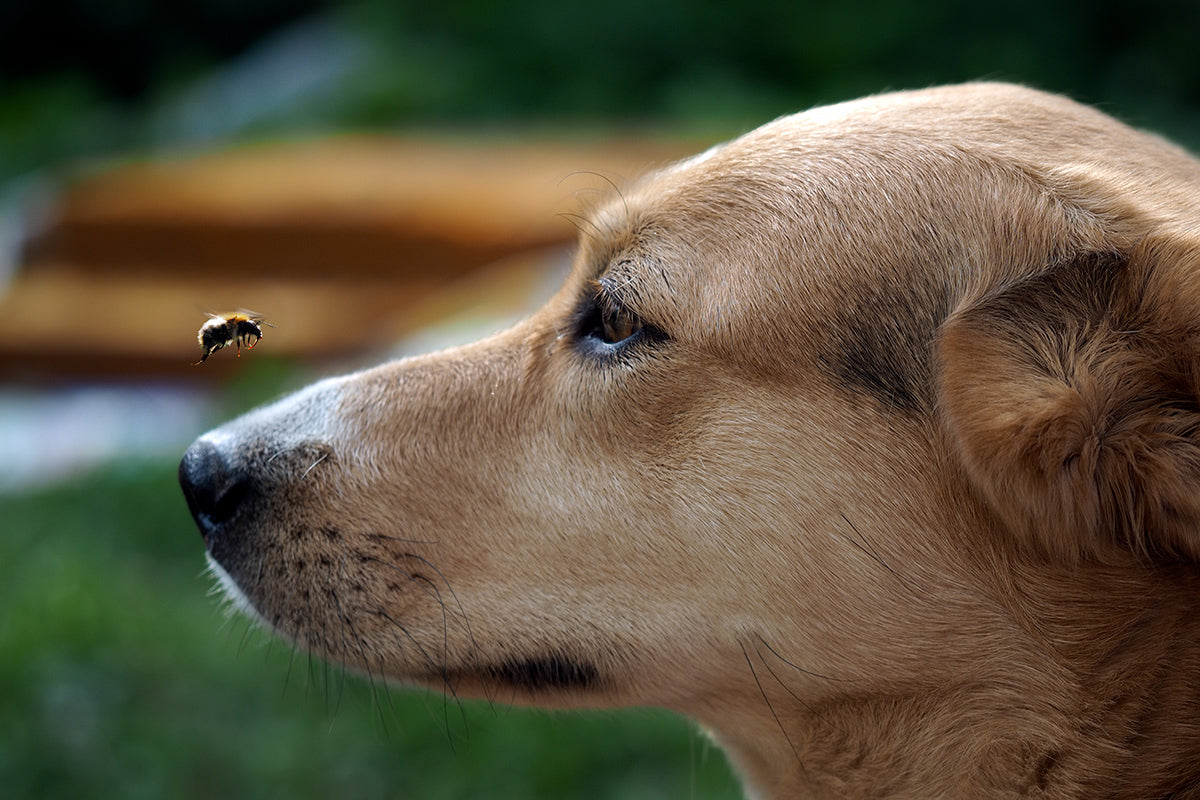Got a question?
Can’t find an answer on our blog? Click here to ask Dr Lisa.
Please select your store

We will include your personalised message on an elegant gift card and your order will be wrapped in a beautiful gift box.

With over 1700 unique Australian bee species, your dog is likely to bump against one during a sniff session. Bees are a vital part of our ecosystem so it’s important to keep an eye out and steer pups away from them while they’re busy bee-ing. Some native bees are capable of stinging more than once too with a percentage of human and dog populations suffering severe allergic reactions to stings.
If your dog is stung, it’ll often be where they’ve been investigating such as the muzzle, lips, inside the mouth, nose and paws. It's important to monitor swelling as some dogs may be allergic, resulting in dangerous swelling that can obstruct the airways. Stings don’t have to be on the face for this to happen either.
Some dogs don’t have a significant reaction, while others can become unwell very quickly. Watch out for local or generalised swelling, drooling, vomiting, pawing at the mouth, itching, lumps, hives, difficulty breathing and even collapse. Dogs with a sting on their paw may suddenly become lame on the affected leg.

Can’t find an answer on our blog? Click here to ask Dr Lisa.